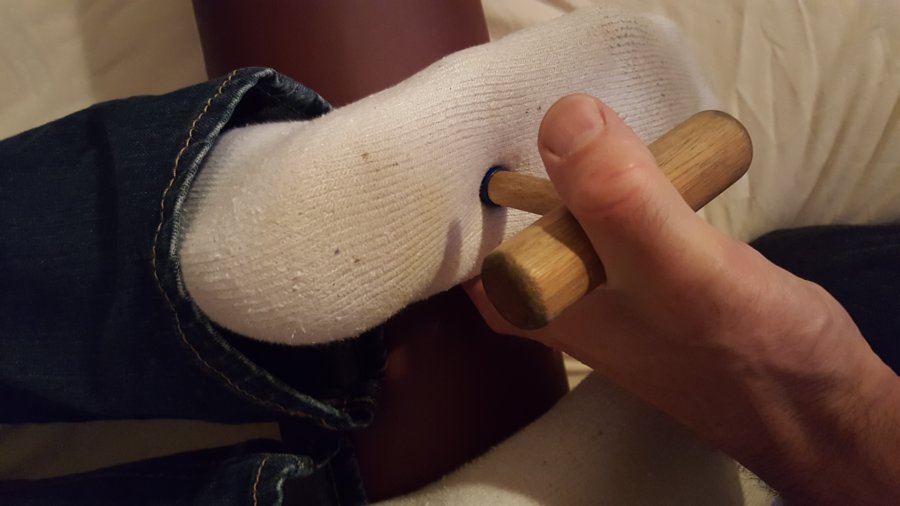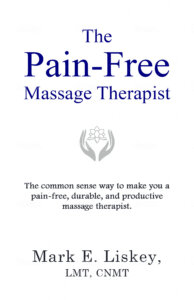Research has shown that most people diagnosed with conditions like plantar fasciitis actually don’t have inflammation (-itis) anymore. Instead they have a condition (-osis), like tissue degeneration.
The medical treatments for tissue inflammation and degeneration are different and may negatively impact treatment outcomes if misapplied. By understanding the difference between the two diagnoses, you can not only fine-tune your massage, but you can also help your client get the correct diagnosis and find the best medical treatment.
The Past
It’s a common misconception that inflammation is always associated with tendon/fascia problems. But when researchers examined the tissue of people with conditions diagnosed as plantar fascittis (research study), they didn’t find a lot of inflammation. Instead they primarily found collagen degeneration.
[bctt tweet=”Most plantar fasciitis cases are degenerative not inflammatory. This changes treatment.” username=”Mark LiskeyMarkLiskey”]
So What?
This is big. For one, if a tendon/fascia condition is not an inflammatory condition, then “corticosteroid injections and nonsteroidal antiinflammatory medications (NSAIDS) may not be the most effective options”.
This could mean that your client who has persistent plantar fasciitis may never have had the appropriate treatment plan.
What May Help?
Preliminary research (plantar fasciitis study, hamstring tendinopathy study) suggests that eccentric strengthening exercises may be helpful with -osis conditions (which is what most people have).
But since many doctors still bundle the terms tendinitis and tendinosis together, they may not appreciate what this can mean for the person in terms of treatment and treatment outcome.
What’s It Mean for Us?
Knowing the difference between –isis and –osis changes how I work with a client before, during and after the massage.
Pre-Massage
For example, let’s say Sabrina is a runner and she comes to my office with a diagnosis of tibialis posterior tendinitis. First, I’m going to check for visual evidence of inflammation. Is there swelling in the tendon/attachment areas and are they warm?
During the intake, I will find out if her condition has been persistent (staying the same or getting worse over a course of many weeks). What treatments has she had? Did she have injections that gave her temporary relief? Typically, the positive effects from injections are short lived when it’s a tendinosis condition (Treatment of Tendinopathy: What Works, What Doesn’t and What’s on the Horizon).
If there are no visible signs of inflammation and Sabrina has had the condition for a while, I’m going to treat her condition as an –osis.
During the Massage
This means that I’m going to massage the tendon and foot attachments, rather than avoid them. However, using a 1 – 10 pain scale, I will only work within a 3 – 4 to reduce the pain in these areas. In the surrounding area and the body of the tibialis posterior, I will work in a 4 – 5.
For a quick tutorial on the pain scale system I use, check out this Pain Relief Massage: How to Find the Right Pressure video.
Post-Massage Recommendations
Here comes the tricky part. If you suspect that your client is misdiagnosed and she should get rechecked, you’re going to want to put that bug in her ear. Here’s how I do it.
First, I lay the groundwork during the intake. After I look for inflammation and consider my client’s injury history, I explain my treatment plan. This is the perfect time to mention the research around “-itis” versus “-osis”.
Next, since I use a pain scale approach when working tendon/fascia conditions, I’m regularly interacting with the client throughout the massage. This would be another opportunity to talk about “-isis” versus “-osis”.
I’ve found that during this time the client will often circle back to the pre-massage conversation of finding a solution for her condition. At this point, I go deeper into the topic of “-isis” versus “-osis”.
After the massage, I do a wrap up. In the wrap up, I tell the client what I did and what I think might be helpful going forward, like getting rechecked to make sure she has the correct diagnosis. It’s not uncommon for me to start by saying, “If it were me…” or “If it were my (fill in the body part)…”.
Follow-Up
Finally, I follow up 2 to 3 days after the massage. In this conversation, I don’t press the client about going back to make sure the diagnosis is accurate, but I will give her my opinion if she asks for it.
Ultimately, my goal is to provide my client with the most current information so that she can make an informed decision about her tendon/fascia condition.
Getting it Done In 3 Steps
If you think your client has an “-osis” condition instead of an “-isis”, help her this way:
- Tailor your massage to reduce her pain by using a pain scale system and appropriate pressure.
- Make her aware of the symptom and treatment differences between “-osis” and “-isis”.
- Follow up and answer her questions.
At times, you may feel like an outsider because you’re operating with the most current information which, in this case, challenges conventional thinking. But your client will thank you for your effort—especially if you can help her get out of pain.
If you want my latest information about pain relief massage and growing a massage business, sign up for my email group. It’s free:-)







Comments on this entry are closed.
So much info Im floored. Thank you!!!!!!!
I’m happy to have readers like you, Caroline! Thanks for the support!